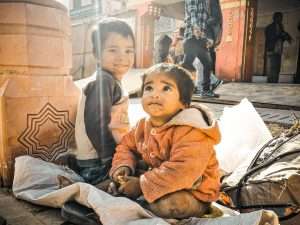Street Children
Pakistan has approximately 22.8 million Out of School Children (OOSC), the second-highest total globally. This number also includes street children, frequently compelled to choose between school and employment.
According to government estimates, more than 1.5 million children survived on the streets of Pakistan in 2010. Street children are among Pakistan’s most vulnerable and marginalized populations.
According to an Inter-NGO Program on street children and youth, a street child is “any girl or boy who has not reached adulthood, for whom the street (in the widest sense of the word, including unoccupied dwellings, wasteland, etc.) has become his or her habitual abode and/or source of livelihood, and who is inadequately protected, directed, and supervised by responsible adults.”
Since its establishment in February 2020, under the National Commission on the Rights of the Child Act of 2017, the NCRC (National Commission on the Rights of the Child) has been instrumental in advancing child rights and protection by carrying out its mandate. The NCRC, along with an NGO, Cities for Children Pakistan, released a policy brief titled, Street-Connected Children in Pakistan: Education and Protection Challenges.
Following the 18th Amendment to the Constitution, provincial administrations are responsible for the issues related to child rights. To safeguard destitute children and improve their prospects, the Punjab police have signed a Memorandum of Understanding (MOU) with four governments and private organizations working for children’s rights and welfare. The province of Punjab has devised a new policy to take the issue more seriously. The proposal is titled Child Protection Policy. The Sindh Assembly has passed the Sindh Street Children Shelter Home Bill, 2018, to safeguard street children’s rights, establish sanctuaries, and promote their welfare until they reach the age of eighteen.
The 2010 Child Protection Act of the Khyber Pakhtunkhwa government provides care, protection, sustenance, welfare, training, education, rehabilitation, and reintegration of at-risk children in Khyber Pakhtunkhwa. Similarly, the Balochistan government’s Child Protection Act (2016) includes protection against street children.
CREDP believes that street children’s voices and perspectives must be heard. Children who reside or work in the streets, or public spaces, are entitled to the respect, protection, and exercise of all the rights enumerated in the Constitution of Pakistan. The implementation of the law must be enhanced. Federal and provincial allocations for child protection initiatives need to be revised. Additionally, the federal government should conduct a nationwide survey to determine the current number of street children living in Pakistan. The United Nations Children’s Fund (UNICEF) estimated in 2010 that there were 1.5 million street children at that time, and since then, there has been no data collected about this subject matter.
